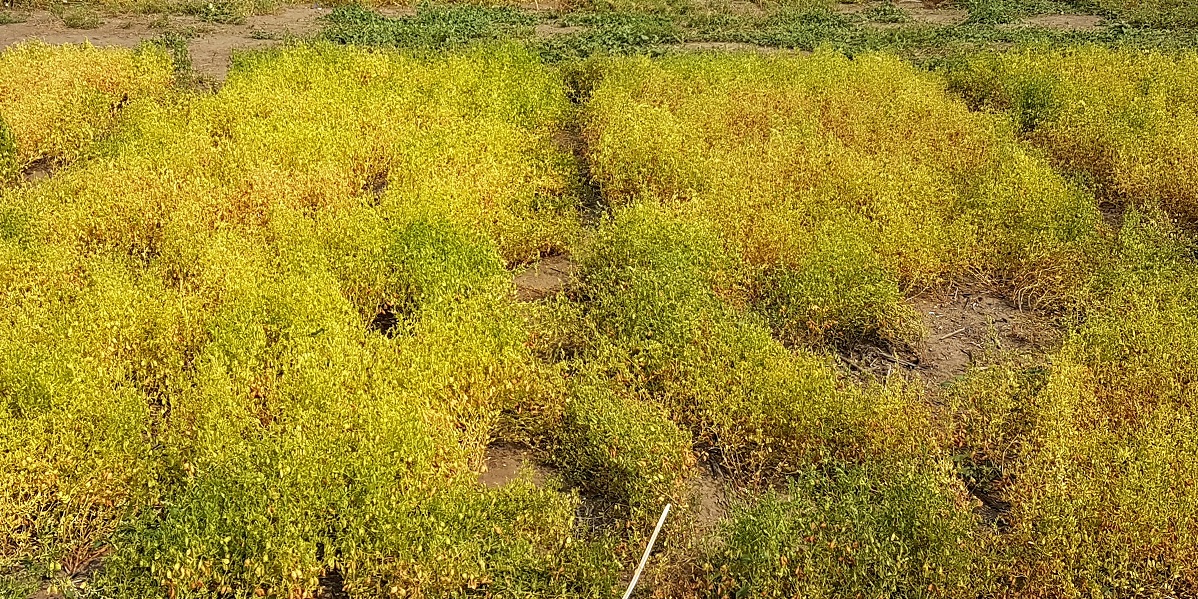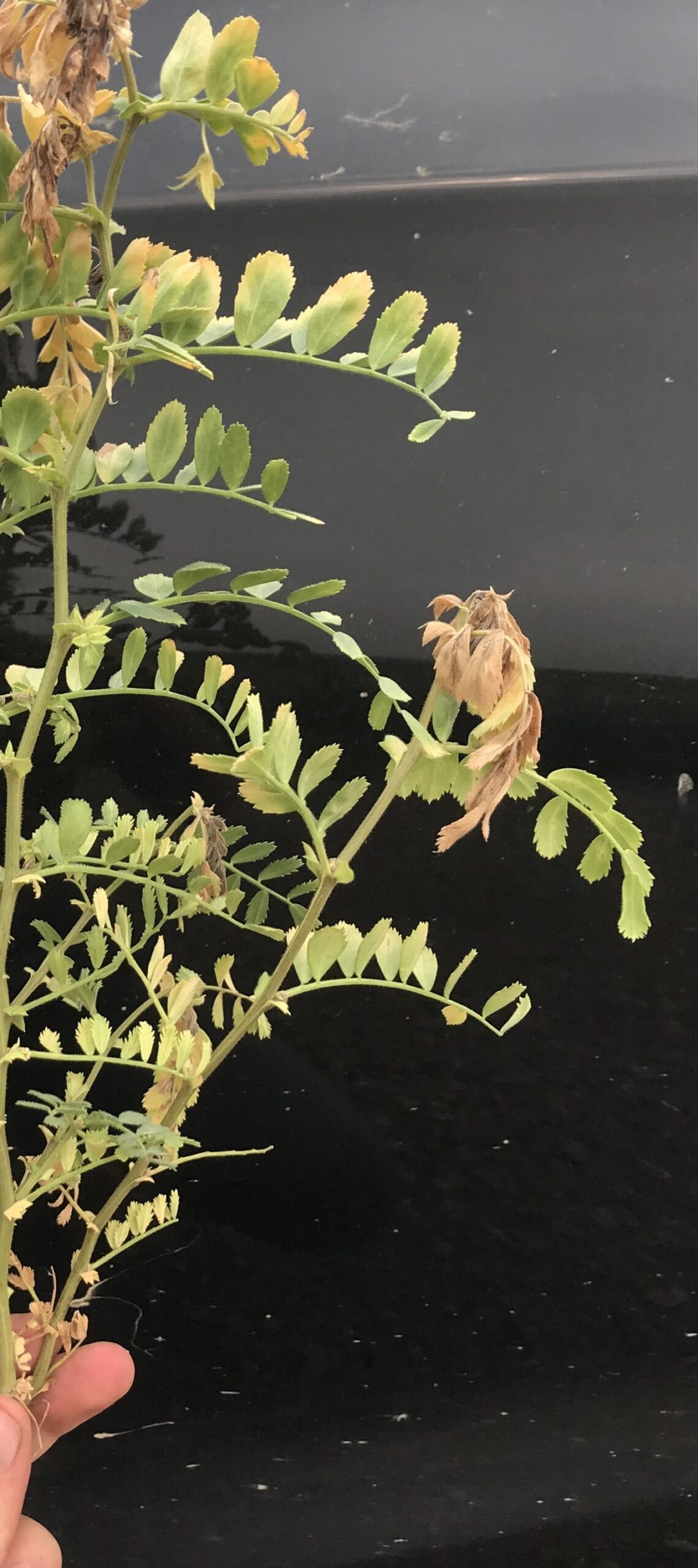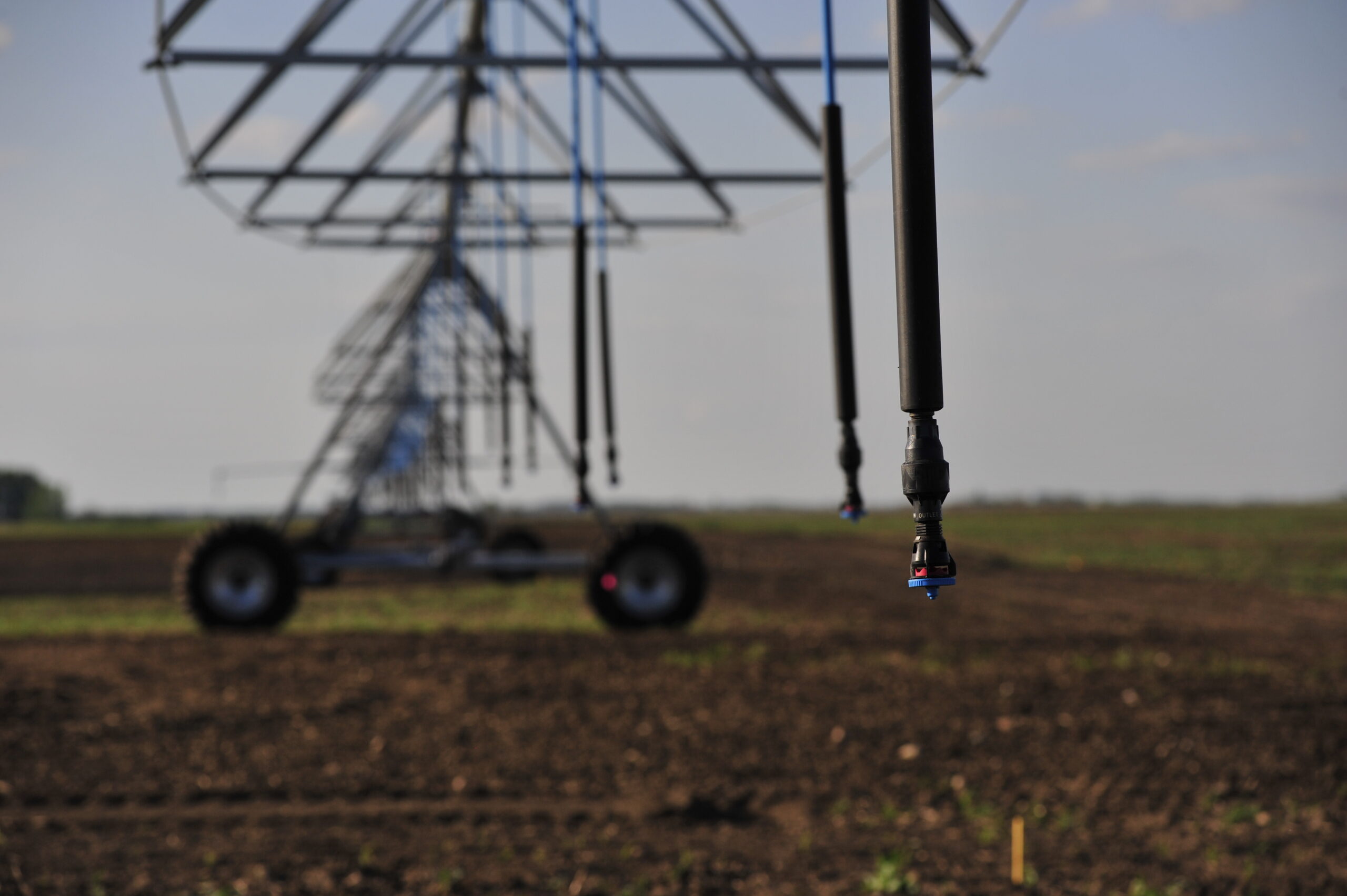Spring frosts are always a risk in Saskatchewan. Injury from frost depends on the severity of the temperature and the length of time the frost in incurred. Freezing surface temperatures can result in very minor injury where there is slight burning of leaf edges, to very severe where the entire above-ground material is damaged. Severe frosts that involve freezing temperatures down to, or below the seed, can kill germinating seeds and developing seedlings.
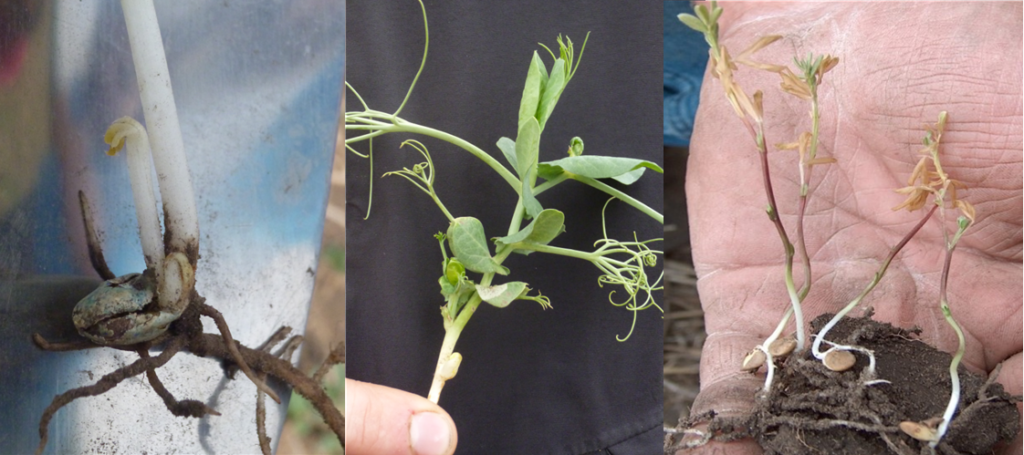
Crop Tolerance
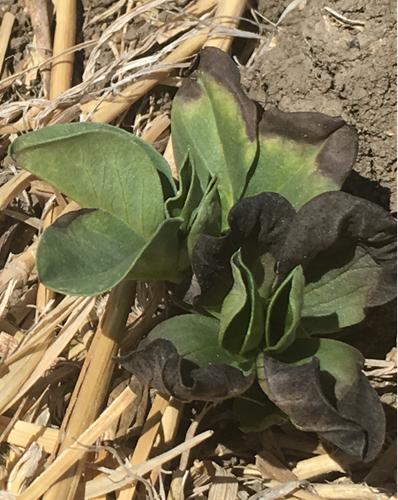
Source: Jennifer Ellis, Ag Grow Consulting
Faba beans are the most frost tolerant followed by peas, lentils, and then chickpeas. These four pulse crops germinate leaving the cotyledon and growing points (nodes) below-ground. There are two nodes below the first true leaf, and usually at least one of the nodes is protected below-ground during early growth, and therefore protected from freezing temperatures. There is also a growing point in the seed that can allow regrowth if the growth above is damaged by frost (or insect pests). When above-ground material is damaged by frost these pulse crops can regrow from these lower or below-ground nodes. Evaluating the extent of damage will take time as plants need to recover and show signs of new growth. Regrowth may be evident within three to four days, but to evaluate the full extent of damage and recovery it may take a week to 10 days.
Light frost can damage those leaves that are exposed. In the case of newly emerged seedlings the damage will likely be on the oldest leaves that encase the younger tissues as the main growing point emerged (Figure 2).
With soybeans and dry beans the cotyledon moves above-ground, similar to canola, which means the growing points are also above-ground (above the cotyledons). This makes these crops more susceptible to frost and limits their ability to recover from severe frost damage. To evaluate damage in soybeans and dry beans look for regrowth from leaf axils and nodes in the above-ground material. Dry beans and soybeans are warm season pulses that do not like cooler temperatures and can be severely damaged by frosts.
Herbicide Applications After a Frost
Besides visible damage, freezing temperatures can put the crop under stress. Whenever the crop is under stress it may be more susceptible to herbicide injury. Herbicides work best when crops and weeds are actively growing, so spraying after a frost should be delayed. Wait at least 24 hours, or preferably 48-72 hours after heavy frost to allow the weeds and crop to recover and resume growth. The crop needs to be actively growing to prevent injury from the herbicide, and the weeds need to be growing so the herbicide can work. Allowing the crop to develop one or two nodes of regrowth is a good sign of recovery. Peas produce a node every four to five days on average, under good growing conditions. This means waiting up to a week after severe frost for herbicide application may provide the safest application window if crop tolerance is a concern. .
Staging Pulses After A Frost
Staging a frozen plant can be difficult as each plant could look somewhat different, depending on the extent of damage. As the plant regrows from different nodes staging can become quite difficult. The safest way of staging for herbicide application in these cases is to base it on the leaves and nodes on the frosted stem, plus the regrowth stem(s). In the case in Figure 1, there would be seven nodes on the main stem plus one node from the regrowth at the second node, making this plant at eight node stage (or six true leaf stage). At this stage the crop would be at the latest application stage for some products. For product staging guidelines refer to individual product labels and company representatives.
Spring Frost Damaged Pulses Tips
- Allow 3-4 days after frost before assessing damage for first signs of regrowth
- Allow seven to 10 days for full damage and regrowth potential
- Wait at least 24 hours, preferably 48-72 hours, after a heavy frost before applying herbicides
- When staging the crop for herbicide applications
include the nodes from the main stem, plus nodes from the regrowth region(s)
